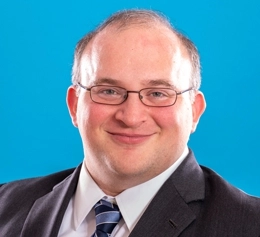 Last week, the U.S. Patent and Trademark Office (USPTOUnited States Patent and Trademark Office. See also PTO.) posted a draft of its 2018-2022 Strategic Plan. While many of the goals set out in the plan are important—for example, improving the ability of examiners to obtain the best prior artPrior art is the knowledge in the field of a patent that was publicly available before the patent was filed. during examination and enhancing the information technology the USPTOUnited States Patent and Trademark Office. See also PTO. makes available both internally and externally—the Strategic Plan illustrates serious flaws in the USPTO’s approach to achieving its mission.
Last week, the U.S. Patent and Trademark Office (USPTOUnited States Patent and Trademark Office. See also PTO.) posted a draft of its 2018-2022 Strategic Plan. While many of the goals set out in the plan are important—for example, improving the ability of examiners to obtain the best prior artPrior art is the knowledge in the field of a patent that was publicly available before the patent was filed. during examination and enhancing the information technology the USPTOUnited States Patent and Trademark Office. See also PTO. makes available both internally and externally—the Strategic Plan illustrates serious flaws in the USPTO’s approach to achieving its mission.
At the heart of these flaws is the USPTO’s embrace of an inappropriate viewpoint. The USPTOUnited States Patent and Trademark Office. See also PTO. treats applicants as “customers,” catering to them first—sometimes at the expense of the public. The USPTOUnited States Patent and Trademark Office. See also PTO. first took this approach in the early 1990s, when it was first required to fund agency activities with user fees. The agency most explicitly adopted it during the dot-com period, stating that the “primary mission of the Patent Business is to help customers get patents.” While the USPTOUnited States Patent and Trademark Office. See also PTO. later retreated from this statement, the viewpoint appears to be re-emerging in the wake of the USPTO’s authorization to set its own fees. In the 2014-2018 Strategic Plan, the word “customer” appears 12 times; in the draft 2018-2022 Strategic Plan, the word appears 70 times. The USPTOUnited States Patent and Trademark Office. See also PTO. is not a business. Taking a view that treats applicants as customers implicitly places their needs and desires over those of the public.
This has real harms. Prioritizing applicants runs the risk of granting patents that shouldn’t have issued, tying up broad areas of technology and rendering known technology unusable. While invalid patents can be challenged, challenges remain expensive and time-consuming. This is particularly problematic when invalid patents are granted in newly developing areas like artificial intelligence, autonomous vehicles, augmented reality, or additive manufacturing, where smaller innovators may not have the resources to challenge patents and may decide to innovate in other areas—or not at all.
The U.S. patent system was created in order to promote progress, not simply to issue patents. The USPTO’s strategic plan should focus its efforts appropriately.

